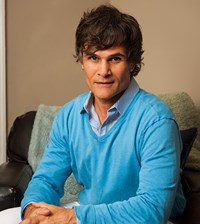 One of the most common precursors to injury of the neck, shoulders, chest or upper back are poor shoulder biomechanics during exercise. Biomechanics are related to structure and function; in other words, how the body moves. Therefore, the positioning of the shoulders is extremely important during upper body movements.
One of the most common precursors to injury of the neck, shoulders, chest or upper back are poor shoulder biomechanics during exercise. Biomechanics are related to structure and function; in other words, how the body moves. Therefore, the positioning of the shoulders is extremely important during upper body movements.
Additionally, how the upper body parts move during an exercise will also effect the overall health of that structure. Think of a sliding closet door that no longer moves freely on its tracks–it sticks. You’ll agree that opening and closing said door will be difficult, and ultimately it’ll break down. That’s exactly what happens to the shoulder joints when the biomechanics are altered in any way. But worse, because the neck and chest are so intimately tied to the shoulder girdle, they can also be affected by poor shoulder biomechanics, sometimes earlier than the actual shoulders.
There are two main causes of poor biomechanics: posture (and we’ll include any adapted dysfunction) and poor form. The former is often a result of the latter, and they consequently worsen concurrently over time. Primary proper shoulder positioning is in the retracted state–or pulled back onto the upper back. This position allows the shoulders to move freely in the socket–thus, resolving the stuck sliding door aspect that can occur when the shoulders are allowed to round forward in the protracted position.
Whether lifting weights or doing yoga, form is everything. Watch the video below to see how to maintain proper shoulder positioning during upper body exercises. Guaranteed you’ll preserve your shoulders that way, and you’ll likely prevent much neck and chest discomfort too. And frankly, you’ll look better, because you’ll develop the way you are supposed to. Give it a try.












